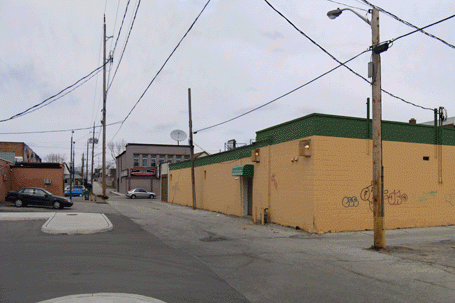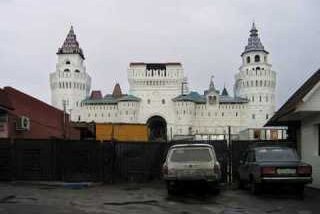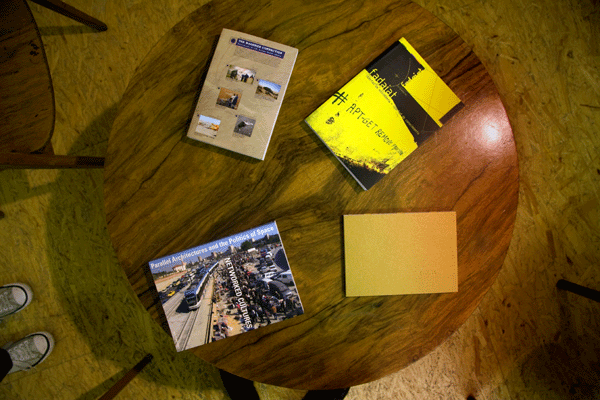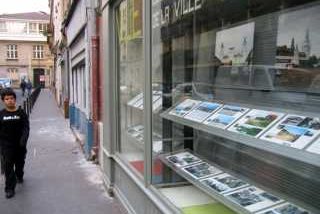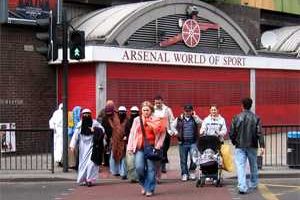- 11 March - 11 April 2010
- Mestna Galerija, Ljubljana
COMMUNICATION NETWORKS, Ljubljana
Art Institutions and New Publics
At present, when virtually all institutions operating in the sphere of culture are primarily concerned with statistics about the numbers of their visitors, the strategies and marketing tactics to increase these numbers and attract more and more sponsors at the same time, it has become almost obsolete to speak of the “subjects” who make up these numbers, that is, the visitors to the various cultural and artistic events – the museum public.
Until recently, focus was placed on the progressive idea that an art institution should relate to its broader social sphere. This concept was largely based on the humanist-positivist notion of society as multicultural, where the differences between people disappear or are “neutralized” precisely in the so-called open spaces. Such strategies included, on the one hand, participatory and socially engaged projects, various practices of opening the museums and galleries to the “other publics” (marginalized groups, the underprivileged, minorities, etc.), and on the other hand, programs that focused primarily on entertainment and similar themes. The idea was therefore to create new publics, some kind of “cloakroom communities,” which would, through these kinds of art projects, create, for the duration of the spectacle, the idea of a temporary community. This related to both the idea of opening up the museum spaces and the demand for increasing the number of visitors.
But there is only one kind of visitors to museums and galleries – the museum-gallery public. By the very nature of their work, art institutions are quite particular: they are spaces that function as open and sensitive to diversity, but only within their own boundaries. Thus, immediately upon entering the physical space of a museum or gallery, visitors are faced with a special system of invisible codes and supervision that dictates their behavior, movement, and, last but not least, their thinking. Every art institution’s “ultimate public” would therefore have to engage in direct and conflictual relations with the institution and the system and resist the predominant knowledge production.
One of the “missions” of a progressive art institution today is therefore to create new communication networks, both within its local environment and in a broader sphere, with other networks in what is called “transversal linkage.” This takes no predetermined form, but is constituted on the basis of events, various alliances or associations and temporary organizations, and relates, in its underlying idea, to the production of other subjectivities.
For this reason we are interested in the following:
What kind of strategies and dynamics of work involving several situations, institutions, and discourses are not identified by or subject to these spaces? How can networking be set up in environments that are very specific? How can a new art institution establish itself in a given space? How can long-term associations with the local environment be established? How can the traps of multicultural exoticism be avoided?
CONCEPT BY
Alenka Gregorič & Bojana Piškur
VISUAL NOTES BY
A Gentil Carioca, Rio de JaneiroP74 Center and Gallery, LjubljanaCenter for visual culture, Museum of Contemporary Art, BelgradeICA -SofiaMGML, Mestna galerija LjubljanaMuseum of Modern Art, LjubljanaMuseum of Modern Art, WarsawOpen Space, ViennaThe Israeli Center for Digital Art, Holon
ARTISTSBotner and Pedro / Guga Ferraz / Laura Lima / Ernesto Neto / Alexandre Vogler / Vesna Bukovec /Mina Petrović & Vera Backović / Bik Van der Pol / Sabine Bitter & Helmut Weber / Aleksandar Dimitrijević / Dubravka Sekulić & Dunja Predić & Davor Ereš / Sanja Jovović / Jakob Kolding / Stefan Römer / Dušan Šaponja & Dušan Čavić / Mark Terkessidis / Milica Lapčević & Vladimir Šojat / Kalin Serapionov /Boštjan Bugarič / Domen Grögl / Apolonija Šušteršič / Peter Mörtenböck & Helge Mooshammer / Avi Mograbi / Haim Ben Shitrit / Erzen Shkololli / Boaz Arad / Fikret Atay
FRIDAY, 12 MARCH 2010
12.00 pm: Guided tour of the exhibition with guest artists and curators
2.00–3.30 pm: Presentations
Tadej Pogačar – P74 Center and Gallery, LjubljanaEyal Danon – The Israeli Center for Digital Art, Holon
Márcio Botner, Guga Ferraz, Laura Lima, Alexandre Vogler – A Gentil Carioca, Rio de JaneiroIara Boubnova – ICA, Sofia Gülsen Bal – Open Space, Vienna
Moderated by Alenka Gregorič
3.30 pm: Coffee break
4.00–5.00 pm: Presentations
Zoran Erić – Center for Visual Culture, Museum of Contemporary Art, BelgradeAdela Železnik – Museum of Modern Art, Ljubljana
Ana Janevski – Museum of Modern Art, WarsawAlenka Gregorič – MGML, Mestna galerija Ljubljana
Moderated by Bojana Piškur
5.00–6.0 pm: Discussion
Guided tour, presentations and discussions will be held in English.
THURSDAY, 8 APRIL 2010
6.00 pm:
Public talk with Barbara Goličnik Marušić, Phd (The Urban Planning Institute): Behavioural maps.
7.00 pm:
Public talk with Boštjan Bugarič, Phd: Mental behaviour for understanding the City
This project has been supported by the Embassy of the Federative Republic of Brazil.
